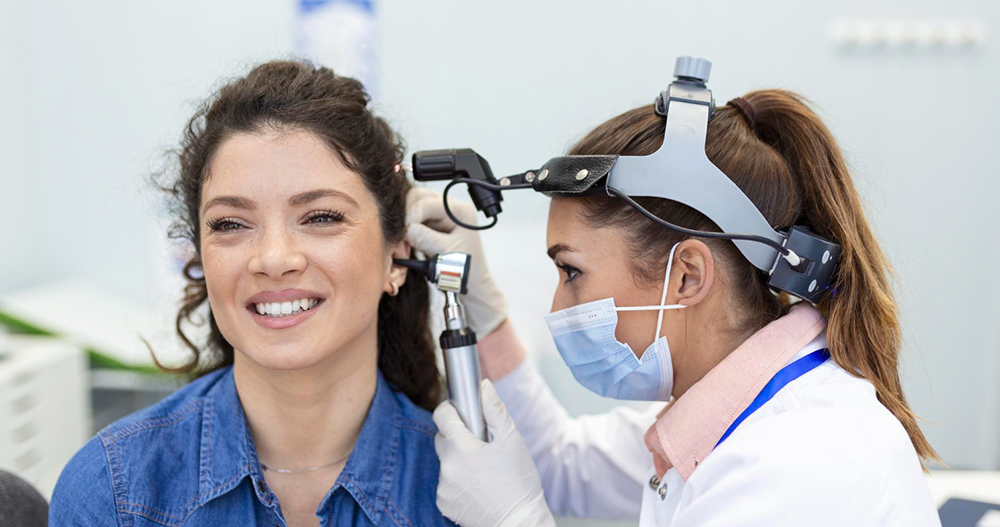
DIAGNOSTIC AUDIOLOGY EVALUATIONS
A diagnostic audiologic evaluation is the first step in determining your hearing capability. The evaluation is done to determine if a hearing loss is present, and if so, to detail the type and severity of the hearing loss. It may also provide insight in to the cause of the hearing loss as well as provide guidance for the audiologist in making appropriate treatment recommendations.
The evaluation consists of a variety of tests to determine the unique aspects of your hearing loss and the level at which you can detect and understand speech. This clinic can test people of any age from newborn infants to seniors. The specific tests done during the evaluation will depend on the patient’s age and what is known already about their hearing status.
Diagnostic audiologic evaluations identify hearing loss, and give your audiologist important information to help determine the best course of action for treatment. Some types of hearing loss can be treated medically or surgically, so it’s important that these types of hearing losses be ruled out before hearing aids or other treatments are considered
A comprehensive diagnostic evaluation test battery includes
Pure tone audiometry- Air conduction /Bone conduction
Speech Audiometry
Distortion product otoacoustic emissions (DPOAE) testing
Auditory brainstem response (ABR) testing
Tympanometry or acoustic immittance testing
Pure-tone air conduction testing determines the quietest tones that a person can hear at different frequencies, both low and high. Bone conduction testing is similar to pure-tone air conduction testing. The results help the specialist determine if the hearing loss is originating from the outer/middle ear or from the inner ear.
A speech reception threshold (SRT) test determines the lowest level at which the patient can recognize words or speech stimuli. Word recognition testing involves repeating back a list of recorded words presented at a louder, but comfortable, level. Repeating sentences in competing background noise is also used for the teen and adult populations.
DPOAE testing is completed to assess inner ear or cochlear function. This test is often completed with young children as it does not require a response from the patient. A soft probe is used to present tones to the cochlea, hair cells in the cochlea then send a response back out which is measured by the probe. It is important that the patient sits quietly and still for this measurement to be completed.
ABR testing measures the way a patient’s auditory nerve responds to tonal frequency bands of sound. This test allows the audiologist to test the auditory system when the patient is not able to actively participate in the testing. Four stickers, called “electrodes” are placed on the patient’s forehead and behind the ears. As sounds are sent through headphones worn by the patient, the electrodes measure how the auditory nerve responds to the sounds. This test is best completed while asleep or laying very still.
Additional testing can be completed to assess the tympanic membrane (eardrum), middle ear and the acoustic reflex pathway. These tests involve a soft probe in the ear. Air pressure is placed in the ear canal during tympanometry, measuring tympanic membrane mobility. Acoustic reflex testing involves listening to brief, loud tones to assess the middle ear muscle contraction which is helpful in differential diagnosis of the various types of hearing loss.
HEARING AID FITTING
A hearing aid trial/ fitting is an appointment scheduled for you after your hearing tests have been done and your hearing loss has been discussed with your Audiologist and it has been decided that your hearing loss cannot be resolved by medication or surgery. It is important that you communicate your needs and expectations to your audiologist, so that you can find a brand and model of hearing aid that suits your preferences or needs. Once you have decided on a hearing aid that suits your needs, the next step is the fitting. During this process your audiologist makes necessary adjustments to the aid based on your hearing loss and also activates special functions as per your lifestyle needs. Based on your preferences, the aid may have to be specifically made by the manufacturer and may take some time. You will be updated regarding this by the clinic.
OCCUPATIONAL HEARING EVAUATIONS
The Occupational Safety and Health Administration (OSHA) have enacted requirements and procedures for hearing conservation in an effort to standardize hearing safety practices and reduce the incidence of preventable hearing damage. In most cases, OSHA requires that employees who are exposed to a time weighted average (TWA) of 85 dB be part of a hearing conservation program which includes hearing testing and employee training.
Testing employees hearing levels at regular intervals helps to protect employees from chronic hearing conditions (i.e. noise-induced hearing loss), which can have a significant negative impact on an employee’s quality of life. Lack of enforcement of workplace hearing testing can also mean employers are open to legal action should an employee suffer noise-induced hearing loss.
We are using revolutionary, highly portable audiometer allows clinicians and healthcare professionals to test patients at home, in the hospital, on-site, or in the workplace – without needing an audiometric sound booth.


